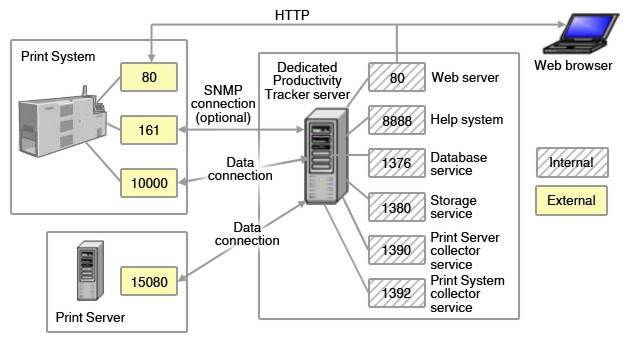
What is a Port (computer networking)?
In network technology, the port (Port) generally has two meanings: one is the physical meaning of the port, for example, ADSL Modem, hubs, switches , routers used to connect other network equipment interfaces, such as RJ-45 port, SC port and many more. Second, the logical meaning of the port, generally refers to the TCP / IP protocol port, port number range from 0 to 65535, such as for browsing Web services port 80, 21 ports for FTP services and so on. Ports act as logical commnications endpoints for computers and are used on the Transport layer of the OSI model by protocoal. There are 65536 port altogether, numbering between 0 and 65535.
Port logical sense for a variety of classification criteria, the following describes two common classification:
1. Distribution division by port number
+ Well-known port
Well-known port known as the port number, range from 0 to 1023, these port numbers are generally fixed for some services. For example, port 21 is assigned to the FTP service, port 25 is assigned to the SMTP (Simple Mail Transfer Protocol) service, port 80 is assigned to the HTTP service, port 135 is assigned to the RPC (remote procedure call) service.
+ Registered Ports
Ports used by vendors for proprietary applications, range from 1024-49,151. These must be registered with the IANA. For example, Microsoft registerd 3389 for use with the Remote Desktop Protocol.
+ Dynamic port (Dynamic Ports)
Dynamic port range from 1024 to 65535, these numbers are generally not assigned to a fixed service, that many services can use these ports. Just run the program to the system application to access the network, the system can be allocated from a number of these ports for the program. For example, 1024 port is assigned to the first system to apply for the program. After closing the program process, it will release the occupied port number.
However, the dynamic port is also often used by the virus Trojans, such as the glacial default connection port is 7626.
2. Classification by protocol
by protocol type division, can be divided into TCP, UDP, IP and ICMP (Internet Control Message Protocol) port. The following describes the TCP and UDP port:
+ TCP port
TCP port that Transmission Control Protocol ports required to establish a connection between the client and the server, which can provide reliable data transmission. Commonly, FTP port 21, Telnet 23, SMTP 25, HTTP 80, and so on.
+ UDP port
UDP port that the user datagram protocol port, without the need to establish a connection, security can not be guaranteed between the client and the server. Common DNS services are 53 ports.